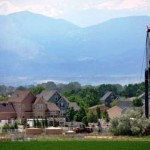
Table 1: Characteristics of the five major Southeast Asian basins. Population data (2005) are based on the GPWv3 dataset [http://sedac.ciesin.columbia.edu/gpw (9 March 2009)]; precipitation data (average from 2001 to 2007) are based on (10); glacier areas are based on a dataset [http://glims.colorado.edu/glacierdata (9 March 2009)] provided by the Global Land Ice Measurements from Space (GLIMS) project (9). Irrigated areas and net irrigation water demand are based on (11). Upstream refers to the area > 2000 m.
We made projections of future upstream discharge using a hydrological modeling approach that incorporates uncertainty about the cryospheric response by employing a scenario analysis. The hydrological model SRM simulated the present-day discharge with acceptable accuracy (Figure S1). To provide a multi-model assessment of future water availability from the upstream river basins, we forced the SRM model with outputs from five general circulation models (GCMs) for the SRES A1B scenario over the period 2046 to 2065. In addition, two different scenarios of future glacier size were modeled (13):
(i) a best guess based on glacier mass-balance calculations assuming trends in degree days and snowfall between current time and 2050 (calculated by the GCMs) to be linear, and
(ii) an extreme (and unlikely) scenario with total disappearance of all glaciers to serve as a reference.
Upstream water supply is crucial to sustain upstream reservoir systems, which are used to store and release water to downstream areas when most needed. Irrigation water for the Indus Basin Irrigation Systems, which is the largest irrigation network in the world, is, for example, regulated through two major storage dams (Tarbela dam on the Indus River and the Mangla dam on the Jhelum River). Both are located in the upper Indus basin and are fed predominantly by meltwater. Any change in upstream water supply to these dams will have a profound effect on millions of people downstream. Our results show a substantial variation in changes in future water supply (Figure 3). The best-guess glacier scenario resulted in a modeled decrease in mean upstream water supply from the upper Indus (-8.4%), the Ganges (-17.6%), Brahmaputra (-19.6%), and Yangtze rivers (-5.2%). Although these changes are considerable, they are less than the decrease in meltwater production would suggest, because this reduction is partly compensated for by increased mean upstream rainfall (Indus +25%, Ganges +8%, Brahmaputra +25%, Yangtze +5%, Yellow +14%). The analysis even shows a notable 9.5% increase in upstream water yield in the Yellow River because this basin depends only marginally on glacial melt (Figure 2). Results should be treated with caution, however, because most climate models have difficulty simulating mean monsoon and the inter-annual precipitation variation (21, 22), despite recent progress in improving the resolution of anticipated spatial and temporal changes in precipitation. Nevertheless, we conclude that although considerable cryospheric changes are to be expected, their impact will be less than anticipated by, for example, the 4AR of the Intergovernmental Panel on Climate Change (IPCC) (2). In that report, it was suggested that the current trends of glacier melt and potential climate change may cause the Ganges, Indus, Brahmaputra, and other rivers to become seasonal rivers in the near future. We argue that these rivers already are seasonal rivers, because the melt and rain seasons generally coincide and a decrease in meltwater is partially compensated for by an increase in precipitation. Figure 3 also shows a temporal shift in the upstream hydrograph patterns. The Yellow River, in particular, shows a consistent increase in early spring discharge. This is highly beneficial because most reservoirs are empty at the beginning of the growing season. An accelerated melt peak may, thus, alleviate a shortage of irrigation water in the drought-prone early stages of the growing season. In addition, further temporal shifts in the hydrograph could occur as a result of changes in seasonal glacier storage caused by a reduced glacier area (23).

Figure 2: Normalized melt index (NMI) for snow and glacier melt for the present (2000 to 2007) climate.
Regardless of the compensating effects of increased rainfall in the two basins with the largest NMI, the Indus and the Brahmaputra, summer and late spring discharges are eventually expected to be reduced consistently and considerably around 2046 to 2065 after a period with increased flows due to accelerated glacial melt. Figure S2 also shows the extreme scenario in which all glaciers are assumed to have disappeared. Again, the Indus and Brahmaputra show the most pronounced changes.
These anticipated changes will also have considerable effects on food security. By relating changes in upstream water availability to net irrigation requirements (11), observed crop yields, caloric values of the crops, and required human energy consumption, one can estimate the change in the number of people that can be fed (13). The results (based on a best guess of 2050 glacier area) show a sizable difference between the five basins. Estimates range froma decrease of -34.5 T 6.5 million people that can be fed in the Brahmaputra basin to -26.3 T 3.0 million in the Indus basin, -7.1 T 1.3 million in the Yangtze basin, and -2.4 T 0.2 million in the Ganges basin, and an increase of 3.0 T 0.6 million in the Yellow River basin. In total, we estimate that the food security of 4.5% of the total population will be threatened as a result of reduced water availability. The strong need for prioritizing adaptation options and further increasing water productivity is therefore ever more eminent (24). Figure S3 shows the projected changes in food security for the two different glacier scenarios. The difference between the scenarios is largest for the Indus and Brahmaputra basins, as a direct result of the high NMI in these areas. Clearly, upstream discharge and downstream food security of the Indus and Brahmaputra basins are the most sensitive to climate change.














